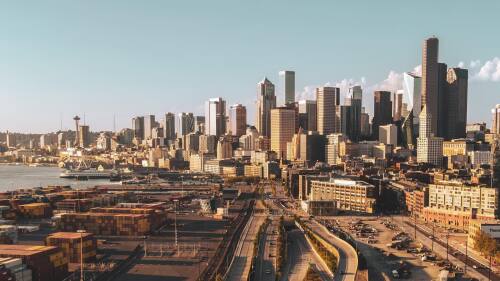This week, the Seattle Department of Transportation (SDOT) is wrapping up its final in-person community meetings for its new Seattle Transportation Plan draft.
What took 18 months, 7,000+ people, and 158 meetings and community events to create? Introducing the first draft of the Seattle Transportation Plan.
This plan, created by the Seattle Department of Transportation (SDOT), guides how the department and all of its counterparts prioritize projects. Think: Creating affordable transit options, building new protected bike lanes, and maintaining existing infrastructure for the next 20 years. Whew — pretty important stuff.
Let’s talk about some of what’s actually in the plan, just in case, you know, you didn’t read the full 1,328 pages.
Public Transit
SDOT has built a new tiered system to help determine which streets certain infrastructure that may address concerns about public transit speed. Premium transit corridors (like Third Avenue downtown and 15th Avenue NE in the U District) that see tons of bus service will be considered for more RapidRide service, future Light Rail corridors, and more frequent service. No new Light Rail routes are mentioned in the document, though.
Biking
SDOT also wants to beef up its network of bike lanes. There’s quite an extensive map of proposed bike lanes and multi-use trails that weave across the city. Most major city streets have been pegged for some form of bike lane as part of the plan.
Pedestrians
SDOT has also built a tiered piority system for filling gaps in sidewalk connectivity. Major areas of focus include Rainier Valley + Beacon Hill, Meadowbrook + Lake City, and Delridge.
See something you think is important to mention before SDOT turns the plan over to the city for review? Show up to one of the grocery pop-ups tomorrow, Oct. 10, write an email, or leave a voicemail at 206-257-2114 by Monday, Oct. 23.













